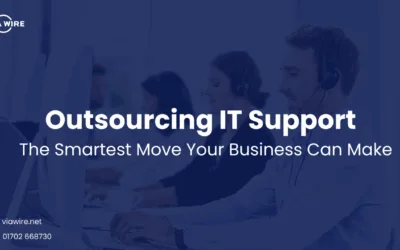As remote and hybrid work models become the norm, more employees are working from coffee shops, airports and co-working spaces than ever before. While public Wi-Fi feels convenient, it can pose a serious – and often underestimated – risk to your business.
If your team connects to unsecured networks without proper safeguards, your business data is vulnerable to interception, manipulation, and theft. Here’s what SMEs need to know about the hidden dangers of public Wi-Fi and how to protect your workforce on the move.
☕ The Problem with Public Wi-Fi
Public networks – whether it’s in a café, hotel, or airport – are often unencrypted and shared by dozens (sometimes hundreds) of users. Cybercriminals can take advantage of these open environments in several ways:
- Man-in-the-middle attacks: Hackers can intercept traffic between a user and the websites they access, stealing login credentials, emails, and files.
- Fake Wi-Fi hotspots: These look legitimate (e.g. “CoffeeShop_WiFi”) but are controlled by attackers who monitor everything users send and receive.
- Session hijacking: Cybercriminals can hijack a browsing session to access email accounts, cloud storage, and even internal business platforms.
🔐 VPNs Help – But They’re Not Foolproof
Many businesses rely on VPNs to protect their employees. While VPNs encrypt data and add an extra layer of security, they aren’t a silver bullet:
- VPNs don’t protect devices before they connect. If a hacker is already in the network or monitoring DNS activity, data can still be at risk.
- Human error matters. If staff connect to rogue networks or click on suspicious links while connected, a VPN won’t save them.
🛡️ Best Practices for Safer Remote Working
To truly protect your business when employees work remotely, implement a layered approach:
- Mobile Device Management (MDM): Manage, encrypt, and remotely wipe devices if needed.
- Conditional Access: Restrict access to apps and data unless users meet specific criteria (location, device health, MFA status).
- Security Awareness Training: Help employees recognise and avoid suspicious networks and phishing attempts.
- Zero Trust Network Access (ZTNA): Assume no device is safe by default – always verify.
✅ What SMEs Can Do Today
- Audit remote access habits: Where do your team connect from? What networks are being used?
- Deploy modern security tools: Use tools that work together to protect devices, apps, and users – even when they’re off the office network.
- Work with a trusted Managed Service Provider (MSP): An MSP can help design and implement a remote work strategy that’s secure, scalable, and stress-free.
Final Thoughts
Public Wi-Fi might be free – but the cost of a data breach isn’t. Don’t wait for an incident to review your setup. Protecting your remote workforce with the right tools and policies is more than good practice – it’s business-critical.
If you’re unsure how secure your remote setup really is, our team is here to help.




0 Comments